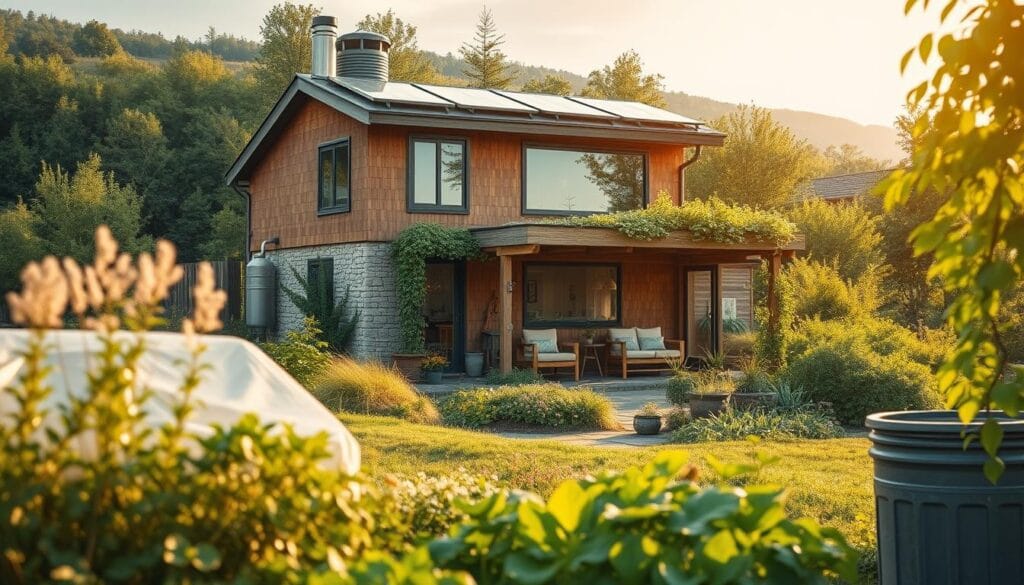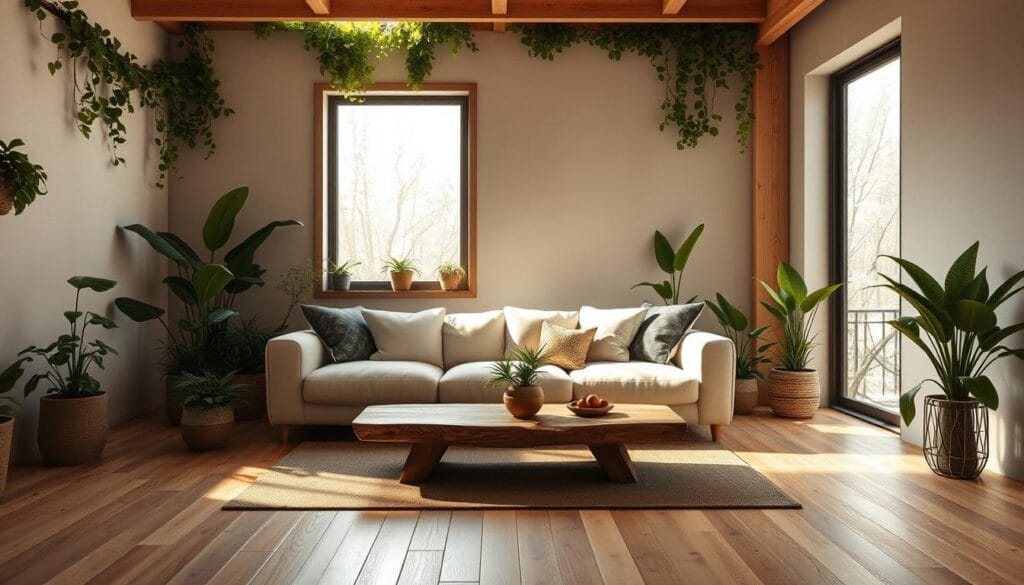Have you ever thought about how small changes in your home can make a big difference? A sustainable home is all about using resources like energy and water wisely. It’s not just about saving money—it’s about reducing your impact on the planet.
Think about it: switching to LED bulbs or installing a programmable thermostat can cut down on energy use. These small upgrades can also improve the air quality in your house. Plus, using natural light and fresh air can make your space feel brighter and healthier.
We’re here to help you start your journey. From DIY tips to energy-saving ideas, this guide will show you how to make your home more eco-friendly. Ready to make a change? Let’s get started!
For more inspiration, check out these high-impact changes you can make for under $100.
Understanding Sustainable Living for a Healthier Home
Curious about how your house can contribute to a healthier planet? A sustainable home is designed to use resources like energy and water efficiently while minimizing its impact on the environment. It’s about making smart choices that benefit both you and the planet.
What Defines a Sustainable Home?
A sustainable home focuses on three key areas: energy efficiency, water conservation, and eco-friendly materials. For example, using LED bulbs can reduce energy consumption by up to 75%. Low-flow fixtures in your bathroom and kitchen can save thousands of gallons of water each year.
Choosing materials like bamboo or recycled wood for flooring and furniture also makes a big difference. These options are durable, stylish, and better for the environment.
Evaluating Your Home’s Environmental Impact
Wondering how your home stacks up? Start with a home energy assessment, also known as an energy audit. This process identifies areas where your house can use less energy. The U.S. Department of Energy’s Home Energy Score is a great tool to measure your home’s efficiency.
Another way to reduce your carbon footprint is by installing a rain barrel. This simple addition collects rainwater for your garden, cutting down on water use. Small changes like these add up over time, making your home more eco-friendly.
Understanding these concepts helps you make smarter upgrades. Every step you take brings you closer to a healthier, more sustainable home.
Green Living Made Easy: Simple Ways to Create a Sustainable Home
Looking to make your space more eco-friendly without breaking the bank? Small changes can have a big impact on your home’s efficiency and your monthly bills. Let’s explore some easy fixes and upgrades you can start today.
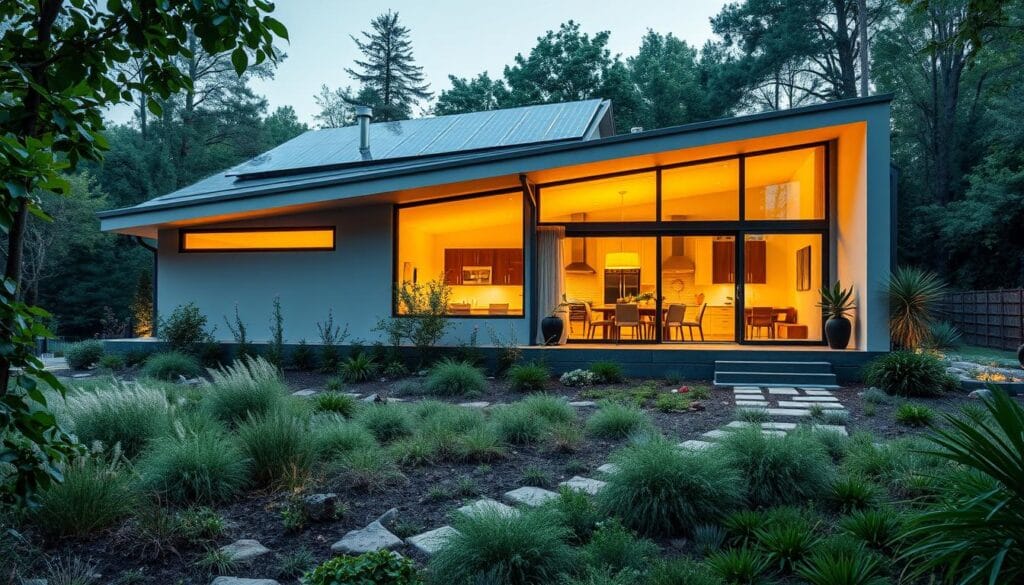
Easy Fixes and Upgrades to Get Started
Switching to LED bulbs is one of the simplest ways to save energy. These bulbs use up to 75% less power than traditional ones and last much longer. Another quick fix is sealing drafts around windows and doors. This small step can reduce heating and cooling costs by up to 30%.
Upgrading your insulation is another smart move. Poor insulation can lead to significant heat loss, but adding insulation to your attic or walls can make your home more comfortable and efficient. For a budget-friendly tip, consider installing a programmable thermostat. It can save you 10-15% on your energy bills.
Benefits of Energy-Efficient Appliances and Fixtures
Investing in ENERGY STAR® appliances is a game-changer. These products use 10-50% less energy than standard models, reducing your carbon footprint and lowering your utility bills. For example, a low-flow toilet can save a family of four up to 13,000 gallons of water annually.
Upgrading your kitchen or bathroom fixtures can also make a difference. Low-flow faucets and showerheads are affordable options that conserve water without sacrificing performance. Every small change adds up, making your home more sustainable over time.
For more inspiration, check out these DIY projects to transform your home on a budget. These upgrades are approachable, cost-effective, and can lead to measurable savings.
DIY Eco-Friendly Home Upgrades
Ready to roll up your sleeves and make your house more eco-friendly? DIY projects are a fantastic way to reduce your impact on the planet while adding a personal touch to your space. Let’s dive into some cost-effective improvements you can tackle today.
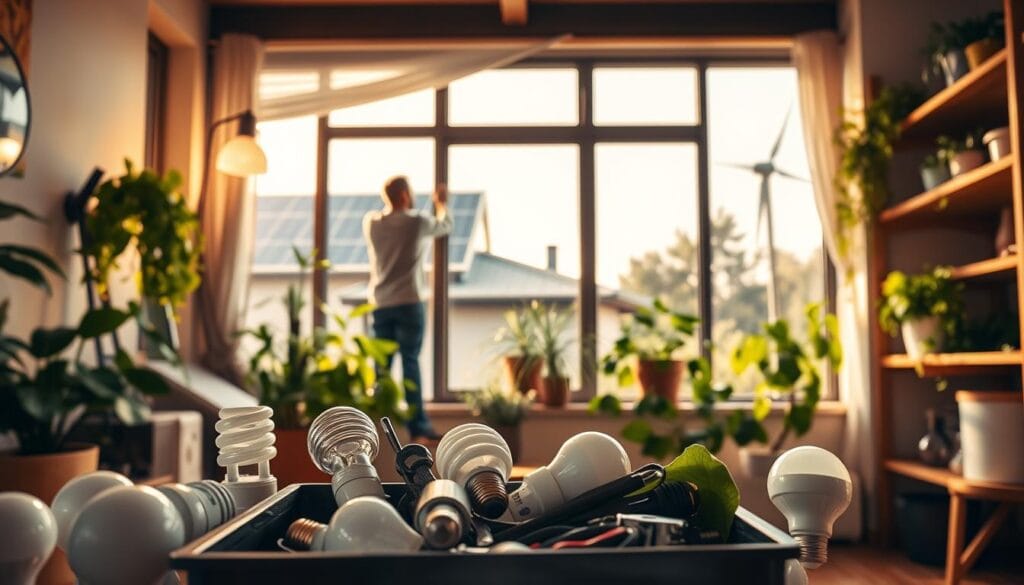
Cost-Effective Improvements for Immediate Impact
Start with weatherproofing your home. Apply caulk around windows and add weather-stripping to doors. These small steps can cut heating and cooling costs by up to 30%. It’s a quick tip that makes a big difference.
Using reclaimed or recycled materials is another smart option. Whether it’s furniture or flooring, these choices are stylish, durable, and better for the environment. Plus, they add a unique charm to your design.
Setting up a rain barrel is an easy way to collect water for your garden. This simple project reduces waste and keeps your plants hydrated without tapping into your main water supply.
Don’t forget about insulation. Adding insulation to your attic or walls can improve your home’s comfort and efficiency. It’s a low-cost upgrade that pays off year-round.
These DIY projects not only benefit the environment but also let you put your creative spin on your home. Ready to get started? Your eco-friendly house is just a few projects away!
Smart Energy & Water Conservation Tips
Cutting down on energy and water waste is easier than you think. With a few simple changes, you can reduce your bills and make your home more efficient. Let’s explore some practical strategies to help you get started.
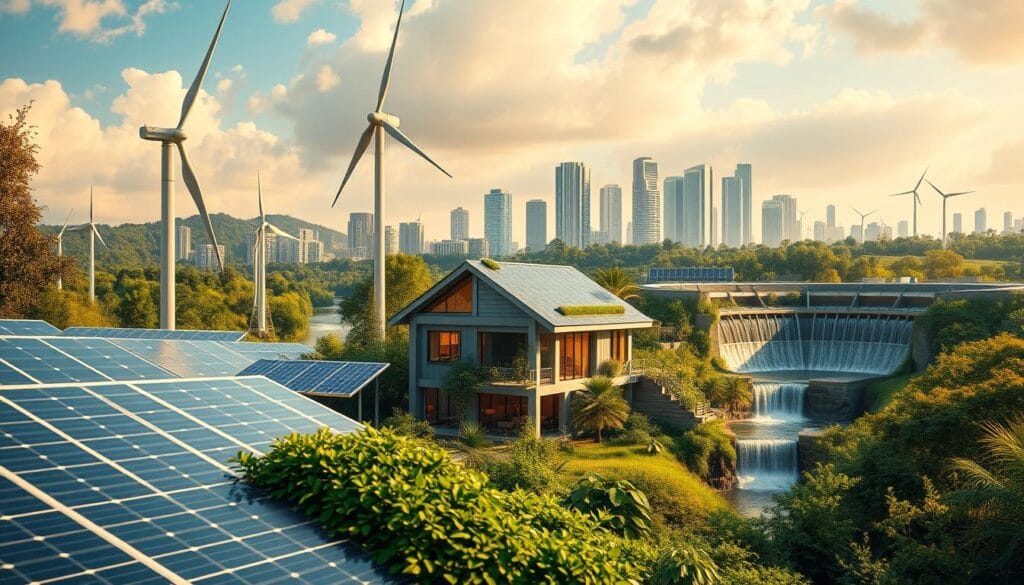
Optimizing Your Energy Consumption
Start by adjusting your daily habits. Turn off lights when you leave a room and unplug devices that aren’t in use. These small actions can add up to significant savings over time.
Upgrade to LED bulbs, which use up to 75% less energy than traditional ones. Pair them with smart power strips to eliminate “phantom” power drain from devices that are turned off but still plugged in.
Consider installing a programmable thermostat. It can save you 10-30% on heating and cooling bills by adjusting the temperature when you’re away. Regular maintenance of your HVAC system also ensures it runs efficiently.
Implementing Water-Saving Fixtures and Practices
Water conservation starts with your fixtures. Install low-flow faucets and showerheads to reduce water usage by 25-60%. Dual-flush toilets or conversion kits can also save thousands of gallons annually.
In your garden, use a rain barrel to collect water for plants. This reduces reliance on your main supply and cuts down on waste. Fixing leaks promptly is another simple tip to prevent unnecessary water loss.
Behavioral changes matter too. Shorter showers and turning off the tap while brushing your teeth can make a big difference. Every drop saved contributes to a more sustainable home.
| Upgrade | Savings | Impact |
|---|---|---|
| LED Bulbs | Up to 75% less energy | Lower electricity bills |
| Low-Flow Showerhead | 25-60% less water | Reduced water bills |
| Programmable Thermostat | 10-30% on heating/cooling | Improved energy efficiency |
By combining these upgrades with mindful habits, you can create a more efficient and eco-friendly home. Start small, and watch your savings grow!
Innovative Eco-Friendly Home Design Ideas
Transforming your house into an eco-friendly haven doesn’t have to be complicated. With a little creativity and thoughtful planning, you can design a space that’s both stylish and kind to the planet. Let’s explore some cutting-edge ideas that blend functionality with sustainability.

Incorporating Renewable Energy Options
One of the most impactful ways to reduce your home’s carbon footprint is by integrating renewable energy systems. Solar panels, for instance, can generate clean power from sunlight, significantly lowering your electricity bills. Small-scale wind turbines are another option for properties with ample space.
Photovoltaic panels are particularly effective in sunny regions. They not only provide energy but can also feed surplus power back into the grid. Pairing these with solar hot water systems ensures your home stays efficient year-round.
Utilizing Passive Solar and Insulation Techniques
Passive solar design is a game-changer for reducing heating and cooling needs. By optimizing window placement and using thermal mass walls, you can harness natural sunlight to warm your home in winter and keep it cool in summer.
Proper insulation is equally important. Materials with high R-values, like cellulose or recycled denim, prevent heat loss and improve comfort. Sealing air leaks around windows and doors further enhances efficiency, making your house more eco-friendly.
Selecting Sustainable Materials for Every Room
Choosing the right materials can make a big difference in your home’s environmental impact. Reclaimed wood, bamboo, and recycled metal are durable, stylish, and eco-conscious options. These materials not only look great but also reduce waste.
For flooring, consider cork or linoleum, which are renewable and biodegradable. In the kitchen, opt for countertops made from recycled glass or composite materials. Every room offers an opportunity to make sustainable choices that align with your design vision.
By combining these strategies, you can create a home that’s both beautiful and environmentally responsible. Start small, and let your creativity guide you toward a greener future.
Conclusion
Every step you take toward a more eco-conscious home makes a difference. From switching to LED bulbs to installing low-flow fixtures, small changes can transform your space. These upgrades not only save energy and water but also lower your utility bills over time.
Remember, it’s about progress, not perfection. Start with simple swaps like sealing drafts or using a programmable thermostat. These steps add up, reducing your home’s environmental impact while enhancing comfort.
We’re all in this together. By making mindful choices, you’re contributing to a healthier planet and a more efficient house. Ready to take the next step? Explore this guide to a safe and sustainable for more inspiration.

